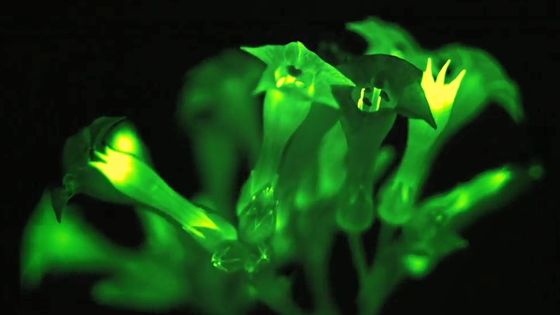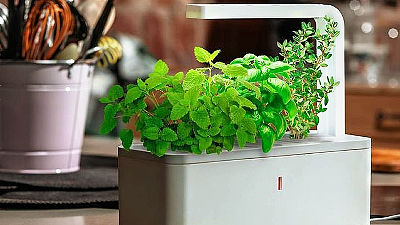Chinese scientists develop glow-in-the-dark succulents that glow for up to two hours and cost just 200 yen
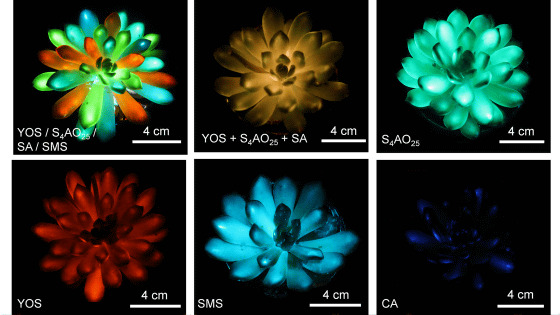
A research team at South China Agricultural University in China has succeeded in developing a 'glow-in-the-dark succulent plant.' The succulent plant can store light in bright places and emit light in the dark. It can glow for up to two hours.
Sunlight-powered multicolor and uniform luminescence in material-engineered living plants: Matter
Glow-in-the-dark succulents that recharge with sunlight | EurekAlert!
https://www.eurekalert.org/news-releases/1095392
The research team succeeded in making succulents glow in the dark by injecting them with phosphorescent particles that glow in the dark. The phosphorescent particles were approximately 7 micrometers in size, allowing them to spread appropriately within the tissue of the succulent. Technically, it is possible to reduce the particles to nanometer size, but if they are too small, the light will be weak. 7 micrometers was found to be the appropriate size to ensure sufficient brightness while allowing the particles to easily penetrate the tissue.
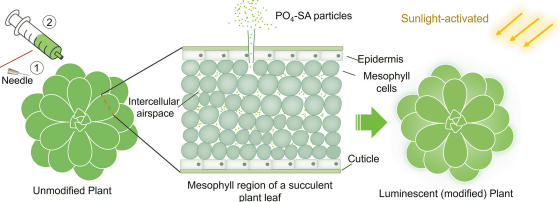
Below is a photo of a glow-in-the-dark succulent. It glows quite brightly. It takes about 10 minutes to make one succulent glow, and the cost, excluding labor, is 10 yuan (about 200 yen). The research team also tried similar experiments with plants like bok choy, but only succulents were able to produce the desired glow.
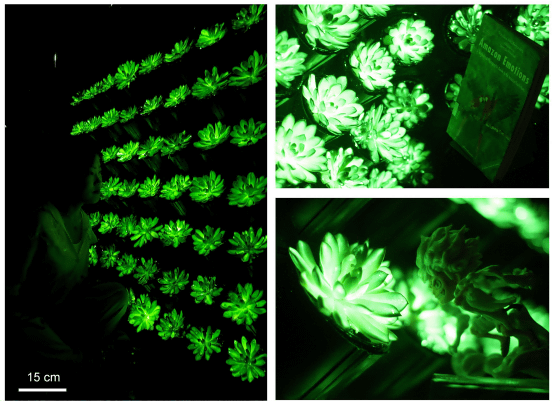
By changing the type of phosphorescent particles injected, it is possible to make the plant glow in a variety of colors, including red, blue, yellow, and green.It is also possible to make different parts of a single plant glow in multiple colors.
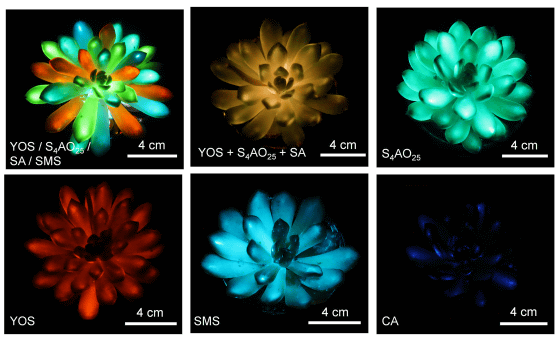
The time required for the material to glow is short: just a few minutes of exposure to an LED light will give it a maximum of two hours of glow. It has also been confirmed that the material's glow-in-the-dark ability does not diminish even 10 days after treatment.
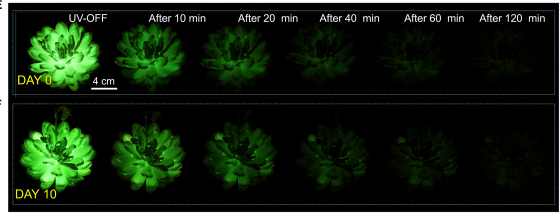
The research team is committed to continuing research to apply the technology they developed to street trees, interior decorations, and other applications.
Related Posts:
in Science, Posted by log1o_hf
